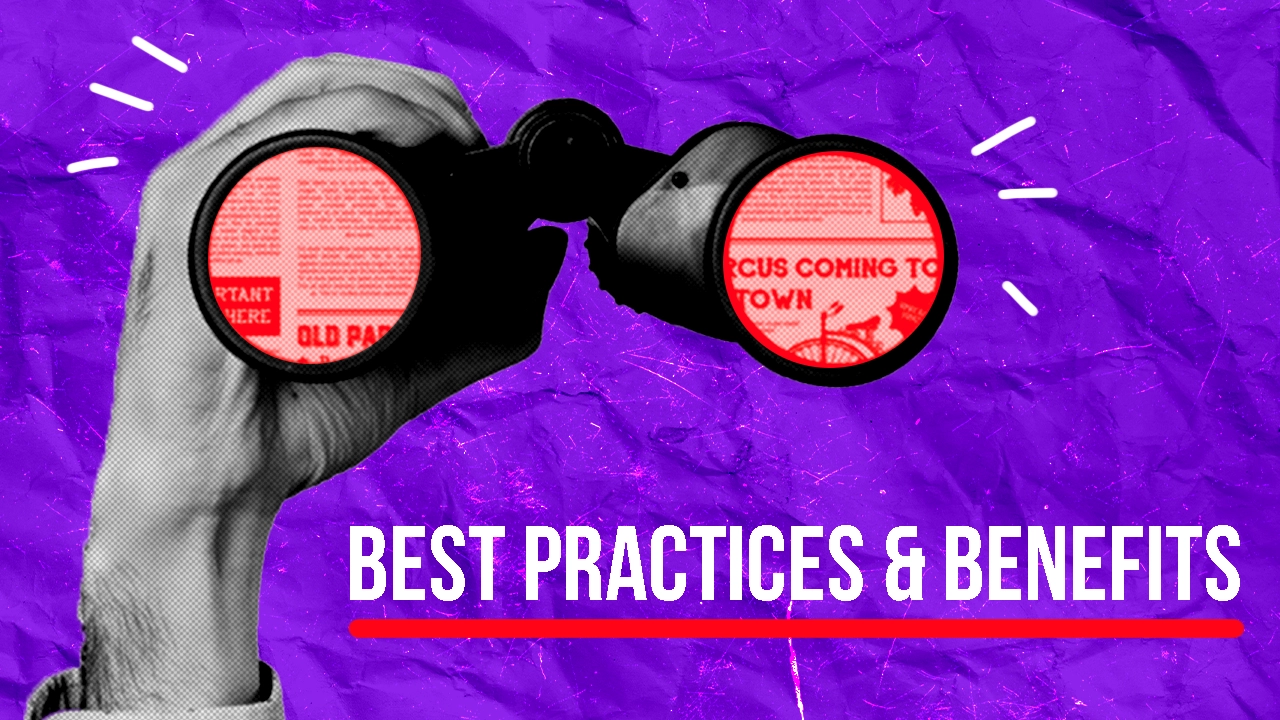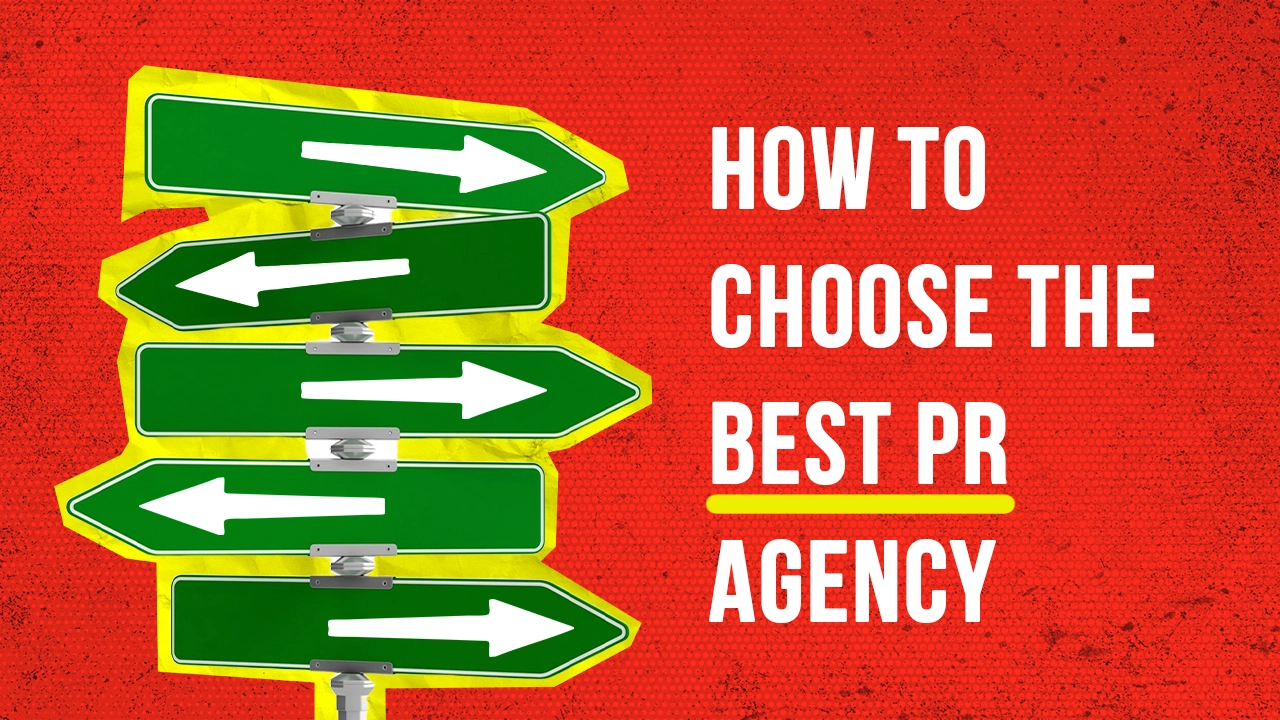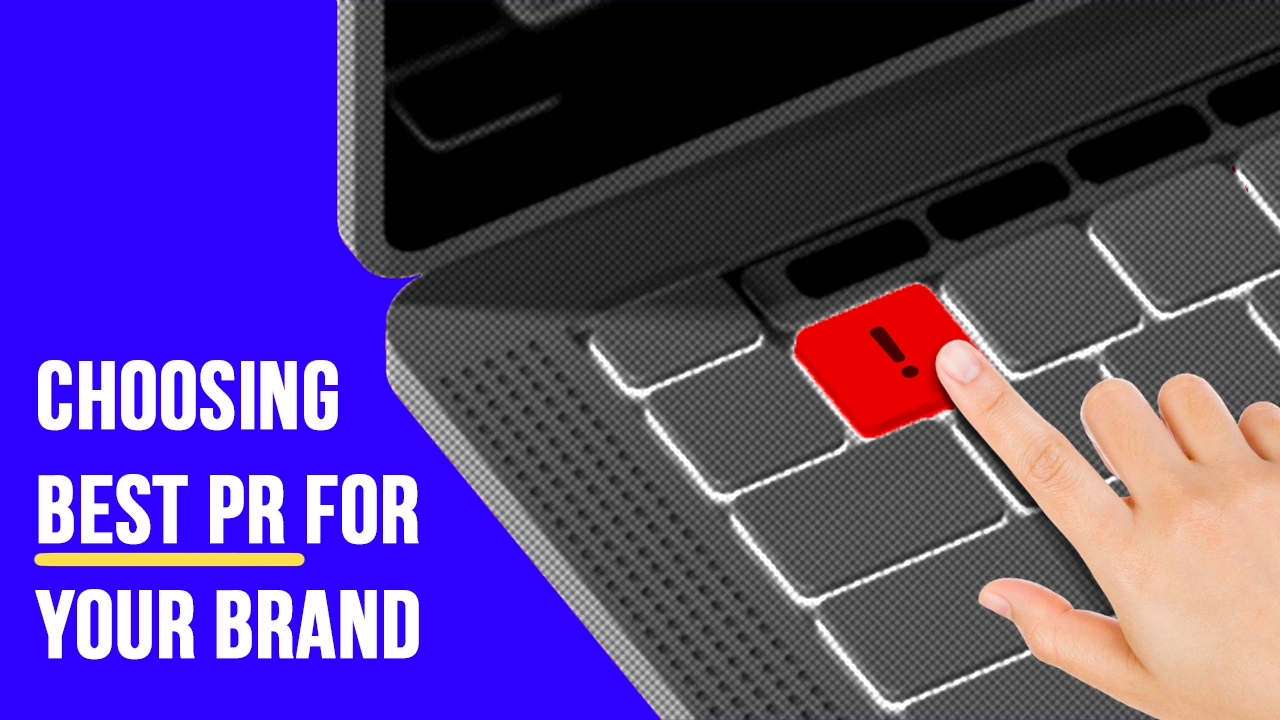In today’s fast-paced digital world, press releases remain one of the most effective tools for businesses to communicate important news to their audience. Whether launching a product, announcing a leadership change, or managing a crisis, press releases provide a direct line to the media and the public. This comprehensive guide will walk you through the essentials of press releases, the different types available, and how to create and distribute one that grabs attention and drives results.
Key Takeaways
- Definition: A press release is a formal, written statement issued to news media and the public to announce newsworthy events or information.
- Purpose: Press releases are primarily used to share company news, generate media coverage, and maintain brand awareness.
- Types: There are many types of press releases, such as product launches, financial updates, company announcements, and crisis management.
- Writing: Press releases follow a standard format—headline, sub-headline, lead, body, boilerplate, and contact info. They should be concise, factual, and newsworthy.
- Distribution: Distribute press releases through news wires, email lists, social media, and other distribution channels to maximize visibility.
- SEO: Optimizing a press release for search engines by including relevant keywords, using multimedia, and targeting the right audience can improve search rankings.
Table of Contents
What is a Press Release?

Definition of a Press Release
A press release is a formal announcement issued to media outlets that contains newsworthy information. It typically covers significant events or developments, such as a product launch, an earnings report, or a company’s participation in a charitable event. These announcements are shared to generate media coverage, enhance public awareness, and influence stakeholders like customers, investors, and employees.
Start building credibility and driving organic traffic with expertly crafted press releases. Learn more about GlobalWavePR’s services here.
Purpose of Press Releases
The primary purpose of a press release is to inform the media and the public about important news. Press releases serve as an official communication channel for companies to manage their brand reputation and ensure that their news is accurately reported.
Press releases also serve several additional functions:
- Building Credibility: Regular press releases help a company build a credible brand image by appearing frequently in the media.
- Controlling the Narrative: In times of crisis or during important developments, a press release helps the company control the message and reduce misinformation.
- Publicizing New Initiatives: Press releases are used to create awareness for new products, partnerships, or any major achievements.
Why Companies Use Press Releases
Press releases are an essential public relations tool because they enable companies to communicate directly with the media and the public. Companies use press releases for:
- Media Coverage: News outlets use press releases as a starting point for their reporting.
- Investor Relations: Press releases are often used to announce financial results and corporate strategy updates, keeping shareholders informed.
- Brand Promotion: Highlighting new products or services helps companies reach new customers and enhance brand recognition.
- Crisis Management: A press release allows companies to address negative news or events proactively.
Press Releases vs. Other Communication Tools
Press releases differ from other forms of communication, such as blog posts or newsletters, in several ways:
- Audience: Press releases target journalists and the media, while blogs and newsletters are often aimed directly at customers or stakeholders.
- Purpose: A press release typically serves a formal, news-oriented purpose, whereas blogs and newsletters focus on building engagement and offering more informal, opinionated content.
- Format: Press releases follow a specific structure to deliver information concisely, while blogs and newsletters can vary in tone and format.
Types of Press Releases
Press releases come in many forms, depending on the type of news being shared. Understanding which type of press release to use is key to reaching the right audience and achieving your PR goals. Below are the most common types:
Product Launch Press Release
A product launch press release is used to announce the introduction of a new product or service. It highlights key features, pricing, availability, and the unique value the product offers. This type of press release is essential for generating media buzz and driving customer interest.
Event Press Release
Event press releases promote upcoming events such as conferences, seminars, workshops, or company-sponsored events. They provide details like date, time, location, and how to register.
Company Announcement Press Release
A company announcement press release covers significant developments within the organization, such as mergers, acquisitions, rebranding, or changes in executive leadership. This type of press release helps keep stakeholders informed about internal changes that could affect them.
Financial Press Release
Issued to inform the public about a company’s financial performance, these press releases are commonly used to announce quarterly earnings, year-end results, or major investments. They are especially important for public companies that need to report financials to shareholders.
Crisis Press Release
When an unexpected situation arises, such as a scandal or product recall, a crisis press release is used to address the issue, clarify facts, and reassure stakeholders. It is an essential tool for damage control and ensuring the public receives accurate information.
Personnel Announcement Press Release
Personnel press releases announce key new hires, promotions, or changes to a company’s leadership team. These are commonly used to highlight the credentials of new executives or board members and explain their role within the company.
How to Write a Press Release
Writing a press release requires careful attention to structure, language, and format. A well-crafted press release is clear, concise, and newsworthy, and it adheres to a standard format that ensures the information is easy to understand.
Press Release Writing Guide
Here’s a step-by-step guide to writing a successful press release:
- Headline: The headline should be short, attention-grabbing, and clearly state the main point of the release. Aim for around 6-10 words.
- Sub-headline: Provides additional context to support the headline and offers more insight into the news.
- Lead Paragraph: The opening paragraph should answer the five W’s—who, what, when, where, and why—clearly and concisely. This is the core of your press release.
- Body: The body expands on the details of the announcement, providing supporting facts, statistics, and quotes. Keep sentences and paragraphs short to maintain readability.
- Boilerplate: A boilerplate is a brief description of the company or organization, offering a snapshot of what they do and their industry expertise.
- Contact Information: Always include contact details for someone who can respond to press inquiries, such as a PR representative or marketing executive.
Press Release Format
The format of a press release is crucial to its success. Following the proper structure makes it easier for journalists and media outlets to digest and use your content. Here is the standard format for a press release:
- Headline: Bold and centered at the top.
- Sub-headline: Just below the headline, italicized.
- Date and Location: The date of release and location should come before the lead paragraph.
- Lead Paragraph: Answers the essential questions (who, what, when, where, why).
- Body: Provides the bulk of the information, often with quotes.
- Boilerplate: A standardized company description.
- Contact Info: Details on how to reach the company or the PR contact.
Press Release Tone and Language
The tone of a press release should be professional, objective, and free from promotional language. Press releases should focus on factual reporting rather than marketing language. Use clear, concise sentences, and avoid jargon or overly technical terms.
Common Press Release Mistakes to Avoid
Here are some common mistakes to avoid when writing a press release:
- Lack of newsworthiness: Ensure your press release is actually about something that matters to the public.
- Overly promotional: Don’t use a press release as a sales pitch.
- Unclear messaging: Make sure the purpose of the press release is clear in the headline and lead paragraph.
- Typos and errors: Proofread to avoid spelling or grammatical mistakes.
How to Write a Compelling Headline
A good headline grabs attention and compels the reader to continue. Here are some tips for crafting a headline:
- Keep it concise: Headlines should be clear and to the point.
- Use action verbs: Strong action verbs create a sense of urgency and newsworthiness.
- Include keywords: Incorporate relevant keywords to optimize the press release for search engines.
Crafting a Strong Lead Paragraph
The lead paragraph is arguably the most important part of the press release. It should summarize the entire announcement in just a few sentences, answering the five W’s. Avoid long, complex sentences and stick to the essential information.
Adding Quotes to Press Releases
Including a quote from a company executive or key stakeholder adds a human element to your press release. It also provides journalists with ready-made content they can use in their articles.
- What makes a good quote?: A good quote adds insight, context, or an opinion, rather than just restating facts. It should be relevant and add value to the information presented.
How to Write a Press Release for SEO
Press releases can also help with search engine optimization (SEO) if properly written. Here are some SEO strategies to keep in mind:
- Include Keywords: Use relevant keywords naturally throughout the press release, particularly in the headline, sub-headline, and first paragraph.
- Optimize Meta Tags: Make sure your press release includes an optimized meta title and description, both of which should include the main keyword.
- Add Links: Include links to your website or blog to drive traffic and improve your SEO rankings.
- Use Multimedia: Embedding images or videos can boost your press release’s SEO by increasing engagement and visibility.
Incorporating Multimedia in a Press Release
Press releases are no longer limited to text. Incorporating images, infographics, videos, or audio clips makes your press release more dynamic and engaging. This is especially useful in sectors like technology or fashion, where visuals help convey more complex ideas.
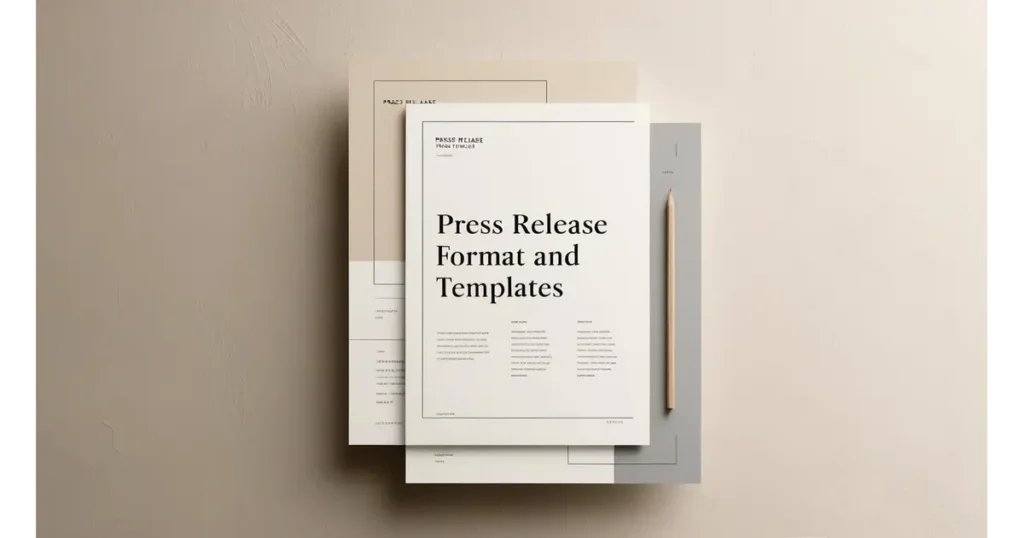
Press Release Format and Templates
Standard Press Release Format
All press releases should follow a standard format to ensure clarity and professionalism. The components of a typical press release include:
- Headline: Attention-grabbing and informative.
- Sub-headline: Provides additional details to expand on the headline.
- Body: Structured with a lead paragraph followed by supporting information.
- Boilerplate: A brief paragraph about the company issuing the release.
- Contact Information: Essential for media outlets to follow up for more details.
Press Release Templates for Various Industries
Templates are helpful for those looking to streamline the press release writing process. While a general format works across industries, it’s often beneficial to tailor the press release to fit your industry’s standards.
• Examples:
- Tech Industry: May include more technical details and product specs.
- Nonprofit: May focus more on the impact and mission of the event or initiative.
- Corporate: Will likely have a more formal tone and structure.
Downloadable Press Release Templates
There are numerous downloadable press release templates available that can make the process more efficient. Many public relations and content marketing platforms provide these templates for free or as part of their services, offering both general and industry-specific formats.
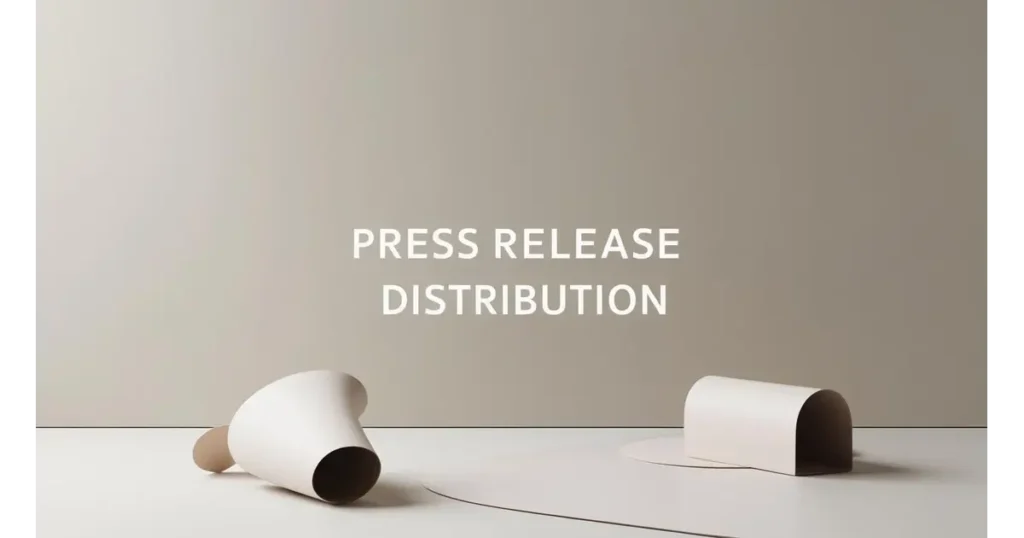
Press Release Distribution
Writing a great press release is only half the battle—getting it in front of the right audience is key. Below, we outline the most effective ways to distribute your press release.
How to Distribute a Press Release
There are several methods to distribute a press release, ranging from traditional media outreach to using online distribution platforms. Here’s a breakdown of the most popular methods:
- News Wires: Distribution services like PR Newswire or Business Wire can send your release to thousands of journalists, media outlets, and online publications.
- Email Distribution: You can manually send your press release to a list of journalists or relevant contacts in your industry.
- Social Media: Sharing your press release on platforms like LinkedIn, Twitter, or Facebook can help it gain additional visibility and even go viral.
Manual Press Release Distribution vs. Using Services
While manual distribution gives you greater control over who receives your press release, using services like PR Newswire can save time and increase the reach of your press release by sending it to hundreds of journalists simultaneously. Both strategies can be effective, but the best option depends on your budget, goals, and industry.
Press Release Distribution Channels
There are various distribution channels available, including:
- News Wires: Reach thousands of media outlets through services like PR Newswire or Business Wire.
- Email: Build a media distribution list with the contact details of relevant journalists and send the press release directly.
- Social Media: Distribute through your company’s social media channels to increase visibility.
Best Press Release Distribution Services
Several services can help you distribute your press release widely. These include:
- PR Newswire: One of the largest and most trusted services for press release distribution, PR Newswire distributes content to over 4,500 websites, 3,000 newsrooms, and 550 news content systems.
- Business Wire: A highly reputable service that delivers your press release to journalists and financial professionals around the world.
- Newswire: Another popular choice, offering affordable and customizable press release distribution packages.
Press Release Distribution for Small Businesses
Small businesses can benefit from press release distribution just as much as large corporations. However, they may not have the budget for major distribution services like PR Newswire. In such cases, focusing on local press, industry-specific outlets, and social media can be a more affordable option.
Global Press Release Distribution Strategies
For businesses with international audiences, global distribution is essential. Ensure that your press release is translated into relevant languages and distributed through region-specific newswires or media channels.
Local Press Release Distribution Strategies
For businesses focused on a local market, targeting local media outlets is key. Reach out to local newspapers, radio stations, and community organizations to spread the word.
How to Target Journalists with Press Releases
To maximize your chances of media coverage, it’s essential to target the right journalists. Use these tips:
- Research: Identify journalists who cover your industry or type of news.
- Personalize: When sending the press release, write a brief personal note explaining why the story is relevant to their audience.
- Follow Up: Don’t be afraid to follow up with journalists if you haven’t heard back, but keep your outreach professional.
Creating a Press Release Distribution List
Building a targeted media list is one of the most effective ways to ensure your press release gets coverage. Here’s how to create one:
- Research: Find the journalists or bloggers who cover stories in your industry.
- Segment: Organize your list by category, such as local vs. national media or general news vs. industry-specific outlets.
- Keep It Updated: Journalists move to different publications frequently, so make sure your list is current.
How to Distribute Press Releases on Social Media
Social media can significantly amplify the reach of your press release. Here are some tips for effectively distributing your press release on social channels:
- Use Hashtags: Incorporate relevant industry hashtags to increase visibility.
- Tag Media Outlets: Tag relevant media outlets or journalists to draw attention to your post.
- Encourage Sharing: Make it easy for followers and employees to share the release, creating additional reach and engagement.
How Press Release Distribution Impacts SEO
A well-distributed press release can significantly impact your site’s SEO. Here’s how:
- Backlinks: Press releases often generate backlinks from reputable sites, which can improve your website’s domain authority.
- Increased Traffic: If a press release is picked up by several publications, it can drive a significant amount of traffic to your site.
- Brand Visibility: A successful press release can help your company appear in relevant search results, improving your overall search rankings.
Why Choose GlobalWavePR as Your Press Release Distribution Partner?
At GlobalWavePR, we’re committed to helping startups like yours succeed with expertly crafted press releases and strategic distribution that delivers tangible results. Whether your goal is to secure funding, boost investor confidence, or generate excitement for a product launch, we have the expertise and resources to make it happen.
Here’s why GlobalWavePR is the ideal partner for your press release needs:
- Expertly Written Content
- Our press releases are crafted to engage and resonate with key audiences, including investors, media professionals, and potential customers.
- Extensive Distribution Network
- Reach your target audience effectively through our vast network of journalists, newswire services, and digital platforms.
- SEO-Optimized Releases
- We ensure your press releases are optimized for search engines, helping your story rank higher and increasing your online visibility.
- Startup-Centric Approach
- Understanding the unique challenges of startups, we design strategies tailored to help you stand out in a competitive landscape.
Ready to Share Your Startup’s Story?
Visit GlobalWavePR today and discover how our press release services can help propel your startup to new heights. Let’s make your next press release a milestone in your success journey!
Press Release SEO

SEO (Search Engine Optimization) is a key consideration when writing and distributing press releases. Optimizing your press release for search engines can help it gain visibility in search results, drive traffic to your website, and improve overall brand awareness.
Optimizing Press Releases for Search Engines
When writing a press release, it’s important to include elements that will help it rank in search engine results. Here’s how:
- Keyword Optimization: Identify the key phrases that people are likely to search for when looking for news related to your press release. Use these keywords naturally throughout the release.
- Title Tags and Meta Descriptions: Write a compelling and keyword-optimized title tag and meta description to improve click-through rates from search engine results.
- Multimedia Optimization: Optimize any multimedia elements in your press release, such as images, by including descriptive file names and alt text with relevant keywords.
Keyword Research for Press Releases
To ensure your press release ranks well, you’ll need to conduct keyword research to identify the most relevant search terms. Here’s a brief guide:
- Use Tools: Tools like Google Keyword Planner, Ahrefs, and SEMrush can help you identify keywords with high search volume and low competition.
- Focus on Intent: Choose keywords that align with the intent of your audience. For example, if your press release is about a new product, include phrases like “new [product name] launch.”
- Long-Tail Keywords: Include long-tail keywords (phrases of three or more words) to capture niche audiences searching for specific information.
Using Anchor Text and Internal Links in Press Releases
When distributing a press release, use anchor text (clickable text in hyperlinks) to link back to relevant pages on your website. This helps drive traffic and can improve the SEO ranking of the linked pages.
- Best Practices: Use anchor text that incorporates keywords and is relevant to the content it links to.
Meta Tags and Meta Descriptions for Press Releases
Meta tags and meta descriptions are HTML elements that provide information about your press release to search engines. Here are some tips for optimizing them:
- Title Tag: Keep your title tag under 60 characters and make sure it’s descriptive and includes your target keyword.
- Meta Description: Write a concise and compelling meta description (under 160 characters) that summarizes the content of your press release and encourages users to click.
Using Google News for Press Release SEO
Press releases that are included in Google News can drive significant traffic and increase brand visibility. To get your press release indexed by Google News:
- Submit to Google News Approved Sites: Ensure your press release is published on a Google News-approved site, such as a newswire service.
- Follow Google News Guidelines: Make sure your press release meets Google News’ content quality standards, which include being timely, factual, and free from excessive promotional content.
How Press Releases Impact Backlinks and Domain Authority
One of the key benefits of a successful press release is the potential to earn backlinks from authoritative websites. Backlinks are links from other websites to your site, and they are a major factor in Google’s ranking algorithm. Here’s how press releases can boost your site’s domain authority:
- Natural Backlinks: When journalists or bloggers cover your news, they’ll often link to your press release or your website, providing valuable backlinks.
- Increased Visibility: As your press release is picked up by more outlets, it can create a snowball effect, resulting in even more backlinks and higher domain authority.
Press Release Length for SEO
While press releases should be concise, they should also contain enough information to be valuable to the reader. Aim for a press release length of 400-600 words. This is long enough to provide detailed information while still being digestible.
Using Multimedia in Press Releases for SEO
Including multimedia elements in your press release can help boost SEO by increasing engagement and time spent on the page. Here’s how to do it:
- Optimize Images and Videos: Use relevant keywords in image file names and alt text, and make sure videos are properly tagged and described.
- Embed YouTube Videos: Embedding a YouTube video in your press release can boost SEO, as YouTube is owned by Google and videos are often given priority in search results.
Examples of Press Releases
Examining successful press release examples can provide valuable insights into what works and why. Below are some examples from different industries that demonstrate effective press release writing.
Successful Press Release Examples
- Example 1: Product Launch: A tech company announces a new smartphone, focusing on its innovative features, sleek design, and competitive pricing. The release includes high-quality images and a compelling call to action for pre-orders.
- Example 2: Event Announcement: A nonprofit organization announces an upcoming charity gala, highlighting the guest list, entertainment, and cause the event will support. The release includes a registration link and a quote from the event’s host.
Press Release Examples for Product Launches
- Example: An automotive company announces the release of an electric car model, detailing its eco-friendly features, safety innovations, and performance specifications.
Press Release Examples for Event Announcements
- Example: A city tourism board issues a press release announcing a local festival, providing event dates, attractions, and how to purchase tickets.
Press Release Examples for Crisis Management
- Example: A food company issues a press release addressing a product recall, explaining the reason for the recall, what actions are being taken, and how customers can receive a refund or replacement.
Corporate Press Release Examples
- Example: A financial institution announces the appointment of a new CEO, outlining their experience, vision for the company, and comments from the board of directors.
Startup Press Release Examples
- Example: A tech startup issues a press release announcing its latest funding round, highlighting the investors involved and how the capital will be used to expand operations.
Nonprofit Press Release Examples
- Example: A nonprofit organization announces a successful fundraising campaign, sharing key metrics (such as the amount raised and the number of donors) and the impact these funds will have on their mission.
Media Pitch Examples Related to Press Releases
In some cases, a press release can be accompanied by a media pitch, which is a brief email or message to a journalist offering an exclusive or additional information. A media pitch typically highlights the relevance of the press release and why the journalist should cover it.
Case Studies on Effective Press Releases
Looking at case studies of successful press releases can help you understand how to structure your release for maximum impact. For example, a case study might explore how a startup gained national media attention through a well-timed and well-written press release about a product launch.
FAQ About Press Releases
What Should Be Included in a Press Release?
A press release should include a headline, sub-headline, date, location, lead paragraph, body, boilerplate, and contact information.
How Long Should a Press Release Be?
A press release should be between 400-600 words. It should be long enough to provide essential details but concise enough to remain engaging.
How Do You Distribute a Press Release?
You can distribute a press release through news wires, email to a targeted media list, or share it on social media platforms. Paid distribution services like PR Newswire can help reach a broader audience.
How Can a Press Release Help SEO?
A well-optimized press release can help improve SEO by generating backlinks, increasing website traffic, and improving search rankings through targeted keywords.
What Are the Key Elements of a Press Release?
Key elements include the headline, lead paragraph, supporting information, boilerplate, and contact information. Multimedia elements like images and videos are also becoming more common.
Can Small Businesses Benefit from Press Releases?
Yes, small businesses can use press releases to gain local or industry-specific media coverage, announce new products, and boost brand recognition. Local distribution channels can be highly effective for small businesses.
Conclusion
Press releases are an invaluable tool for businesses looking to communicate news, build relationships with the media, and manage their public image. Whether announcing a product launch, addressing a crisis, or promoting an event, a well-crafted press release can generate media coverage, increase visibility, and drive business results. By following the guidelines outlined in this comprehensive guide, you can create effective press releases that resonate with your audience and deliver measurable results.
Ready to see how press releases can transform your business? Contact GlobalWavePR today to get started with expertly crafted PR campaigns tailored to your brand.





